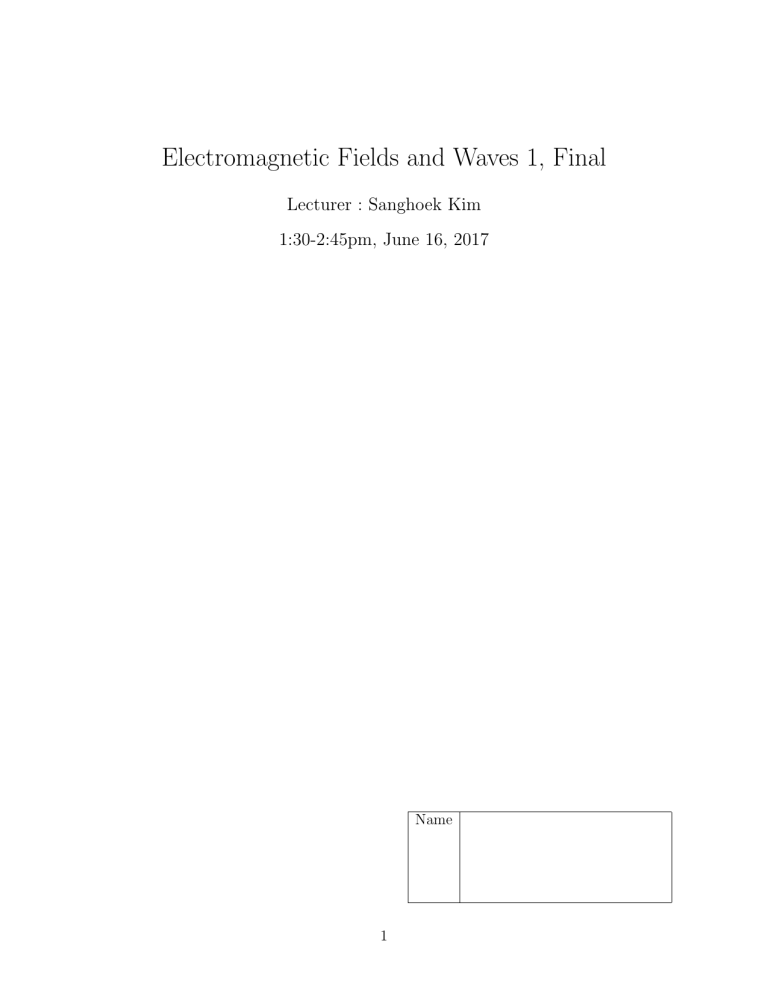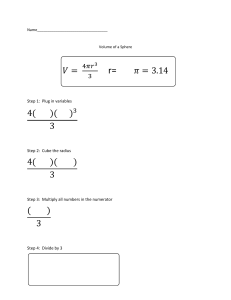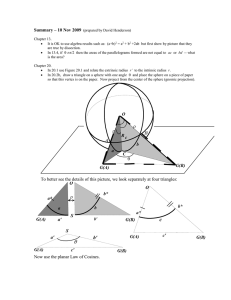
Electromagnetic Fields and Waves 1, Final Lecturer : Sanghoek Kim 1:30-2:45pm, June 16, 2017 Name Sanghoek Kim, Sanghoek Kim 1 Problem 1 (15 pts) (Columb’s force) The Thomson model of a hydrogen atom consists a sphere of positive charge and an electron as a point charge within the sphere. The electron has a negative charge of −e and the total positive charge equals the electronic charge Q = e. Denoting the radius of the sphere as R, the charge density is uniform inside the sphere as ρ0 = e/(4πR3 /3). When an electron is at a distance r from the center of the sphere of positive charge, show that the electron is being attracted inside the sphere of positive charge (r < R) with a force F = e2 r 4π0 R3 Problem 2 (15 pts) (Columb’s force) In Thomson model of Problem 1, if an electron is outside the sphere of positive charge, i.e., r > R, what is the attracting force as a function of distance r? 2 Problem 3 (15 pts) (Gauss’s law) Assume we have an electric dipole at the origin along the ẑ-direction. In class, we learned that the electric field due to the dipole can be obtained by E= Qd 2 cos θr̂ + sin θ θ̂ , 4π0 r3 where Q is the charge of dipole and d is the distance between the positive and the negative charge in the dipole. Considering a large sphere with radius R surrounding the dipole, evaluate Z E · dS S over the surface of the sphere S. 3 Problem 4 (30 pts) (Gauss’s law and electric potential)A positive point charge Q is at the center of a spherical dielectric shell of an inner radius Ri and an outer radius Ro . The dielectric constant of the shell is r = 5. Dielectric shell (a) Determine and plot D as a function of the radial distance r. (b) Determine and plot E as a function of the radial distance r. (c) Determine and plot V as a function of the radial distance r. 4 Problem 5 (15 pts) (Capacitance) We have two concentric conducting shell of spheres. The radius of inner and outer sphere are a and b, respectively. The dielectric between the two conductors has a permittivity of . Derive that the capacitance between two spheres is C= 4π . 1/a − 1/b 5



